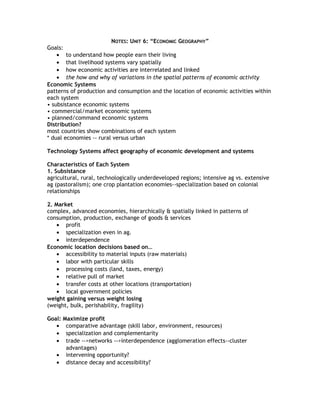The document provides an overview of economic geography, including the goals of understanding livelihood systems and their spatial variations. It describes different economic systems (subsistence, commercial/market, planned/command) and how technology affects economic development patterns. Location factors for different economic activities are outlined. Characteristics distinguishing less from more developed countries are compared. The summary discusses global economic changes like shifts to service industries and the rise of transnational corporations, resulting in a more interconnected world economy.





